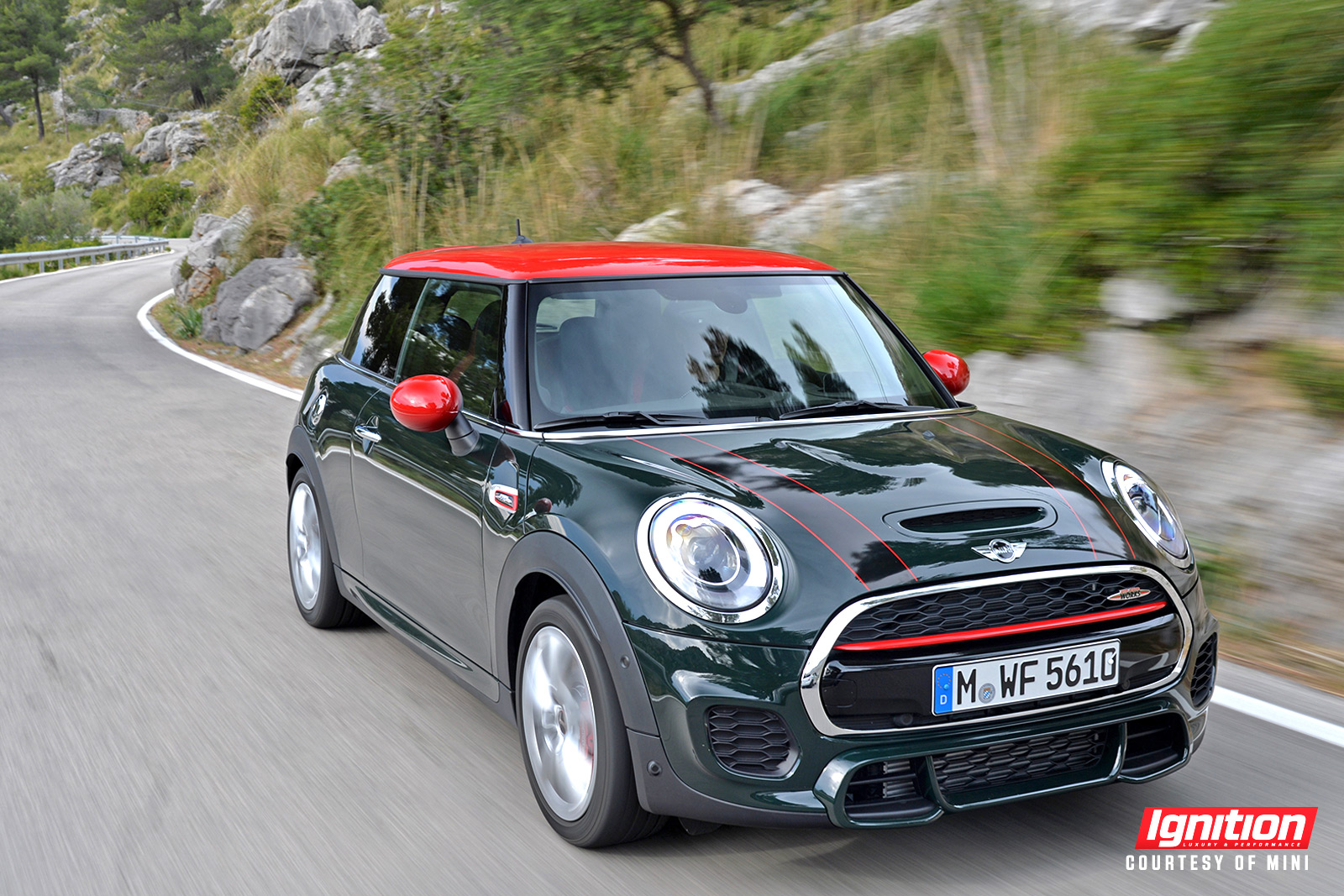
There are few automobiles more iconic than the Mini. It’s been celebrated in popular culture, driven by the famous and not-so famous, and has always transcended social class. That’s because it represents so many different things to a broad spectrum of drivers, whether it’s basic transportation or a racecar capable of besting big horsepower competitors.
With the introduction of a new, third-modern-generation Mini, also comes the hi-po variant for drivers like us. Now simply called the Mini John Cooper Works, it takes the basic three-door recipe and adds a whole lot of firepower to take on all comers in the hot hatch wars.
It’d be easy for Mini to set this model a little lower to the ground, slap on a set of flashy wheels, fit a louder muffler and call it a day. That’d be too easy, of course, and certainly not in line with John Cooper’s heritage.
The Cooper Car Company was founded in 1946 and was soon building racing cars for Formula 1 and the Indianapolis 500. In 1961, at the behest of the Mini’s original designer, John Cooper turned his attention to dialling up the performance of Minis and his name has been associated with the marque ever since.
The modern Mini brand embraces that history and has engineered a hot hatch worthy of the JCW badge. In fact, this 2015 model is the fastest regular production Mini built to date, and consideration has been given to every facet of this little three door that has an impact on performance. Still, the JCW approach to performance is holistic, where the end result isn’t simply greater than the sum of its parts, but rather a truly distinct go-fast Mini.
Starting with the turbocharged 2.0-litre four cylinder, it makes an impressive 228 horsepower and 236 pounds-feet of torque. And with just 1,300 kilograms to move, this JCW is a quick little machine. What’s more impressive is how the power is delivered. You see, peak torque – all 236 pounds of it – is delivered from a mere 1,250 RPM and carries through to 4,800 RPM. This defines the notion of a flat torque curve.
There’s a choice of six-speed manual or automatic transmissions, and before you decry the automatic, you have to appreciate that Mini customers love to shift themselves – the majority of JCWs sold to date have been ordered with manuals. It’s a fine manual, too, and it does all the right things. Clutch take-up is light, ratios are well-chosen for enthusiastic driving, and shift action is superb.
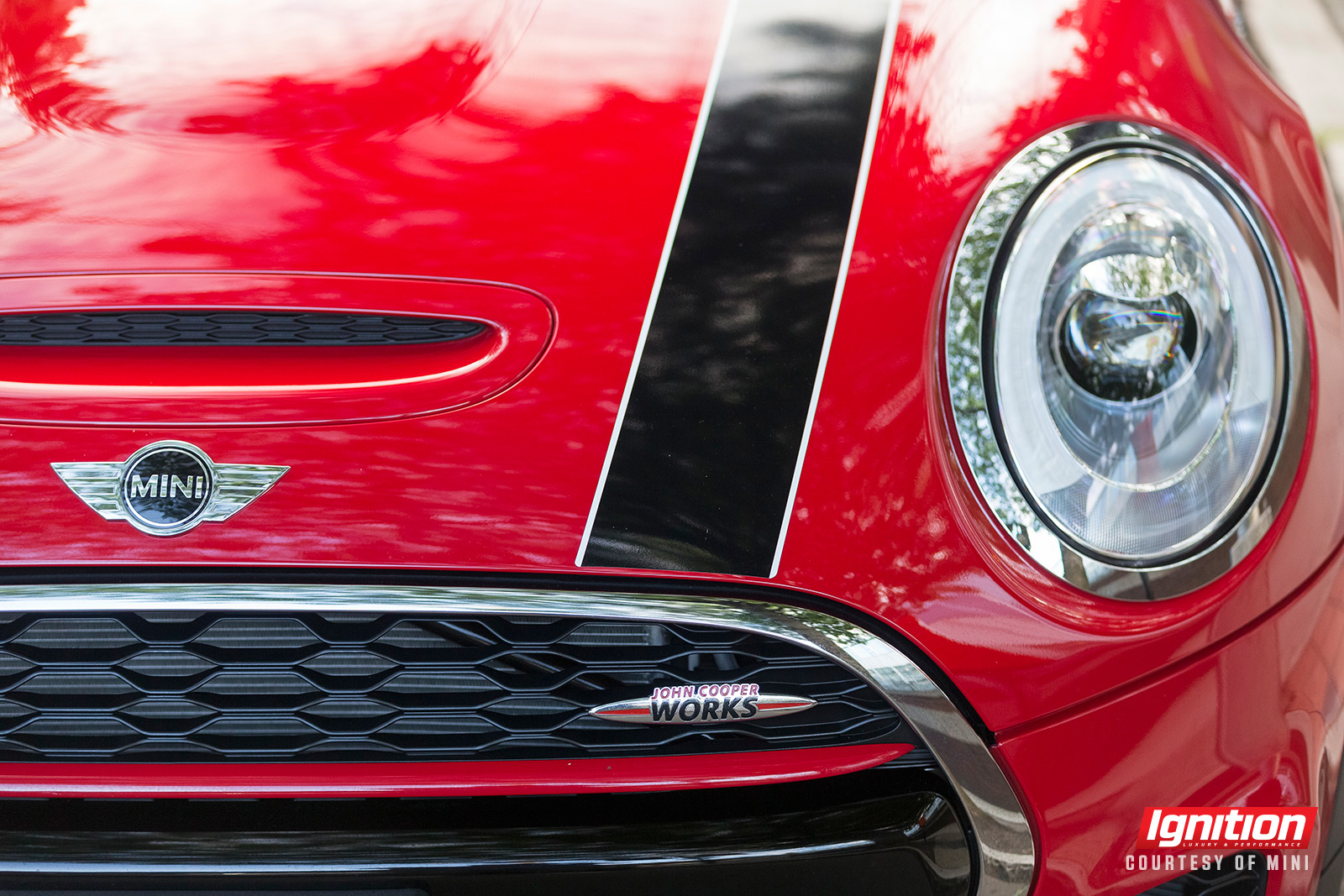
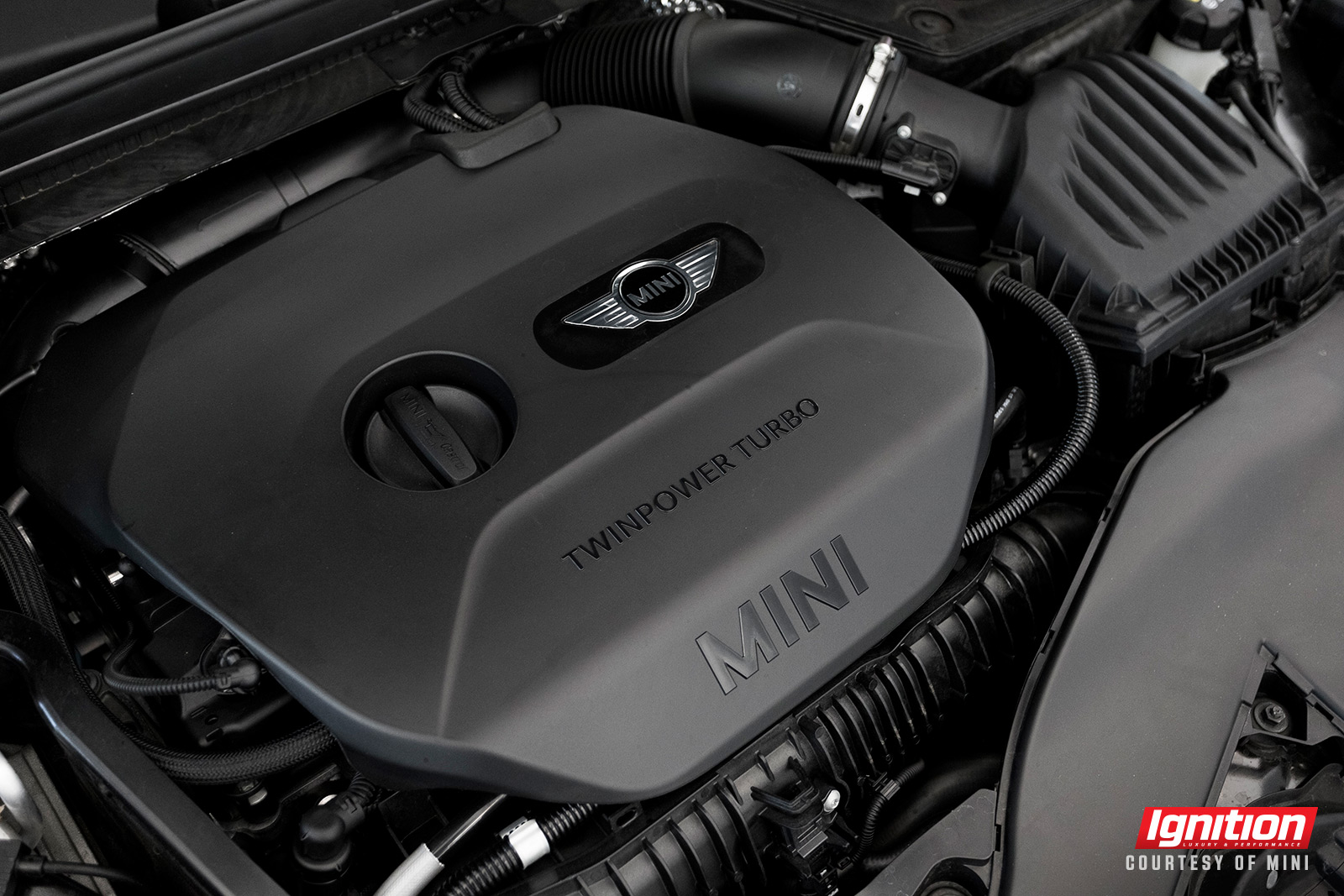

The six-speed auto, however, is exceptional for a traditional, torque converter box. Most impressive are the rapid shifts – they’re near dual clutch quick – and yet it’ll still shift smoothly when you’re cruising. While I drove both transmissions at the car’s launch in Connecticut, I recently revisited the JCW in automatic spec and, for this driver, one who spends far to much time in stop and go traffic, I enjoyed the auto box so much that I didn’t really miss the manual.
Sure, it’ll do 0-100 km/h in around six seconds, but what’s more interesting is that this drivetrain is remarkably fuel efficient and with this hot hatch, it’s truly like having your cake and eating it, too. In mixed open highway and densely urban driving, your lead footed writer averaged a real-world 8.8 L/100 km. Mini says this JCW is good for 9.2 city and 5.3 highway, and those numbers appear too be achievable, too. Not that many years ago, it was impossible for such a fun car to be so frugal. Perhaps this is the unequivocal evidence proving we are indeed living in the greatest age of motoring.
I’ve always favoured a good limited slip differential in powerful front drivers, and when they’re omitted for reasons of cost cutting or underestimating their customers’ desires it leaves me more than a little disappointed. You just know the powertrain engineers know better, but for some reason – perhaps the moment bean counters get involved – a good diff gets left on the engineering room floor.
Sometimes the result is a disaster, like the torque-steering hot mess that is the Ford Focus ST with its brake-based system – one that slows the spinning wheel with the brake rather than simply transferring power like a good diff does. Each time I drive an ST, the smell of brakes is prominent because its faux limited slip brake actuation is just too aggressive.
When I learned the JCW used a similar system, I wasn’t expecting much, but somehow, some way, Mini’s engineers have figured it out. Torque distribution across the front axle feels seamless from the driver’s seat and torque steer is almost entirely absent. In fact, it feels so good and so natural, that you could have fooled me into thinking it used a mechanical limited slip differential. It’s that remarkable, and if you fancy yourself a bit of a driver, you’ll enjoy the JCW’s ability to aggressively put power to the ground.
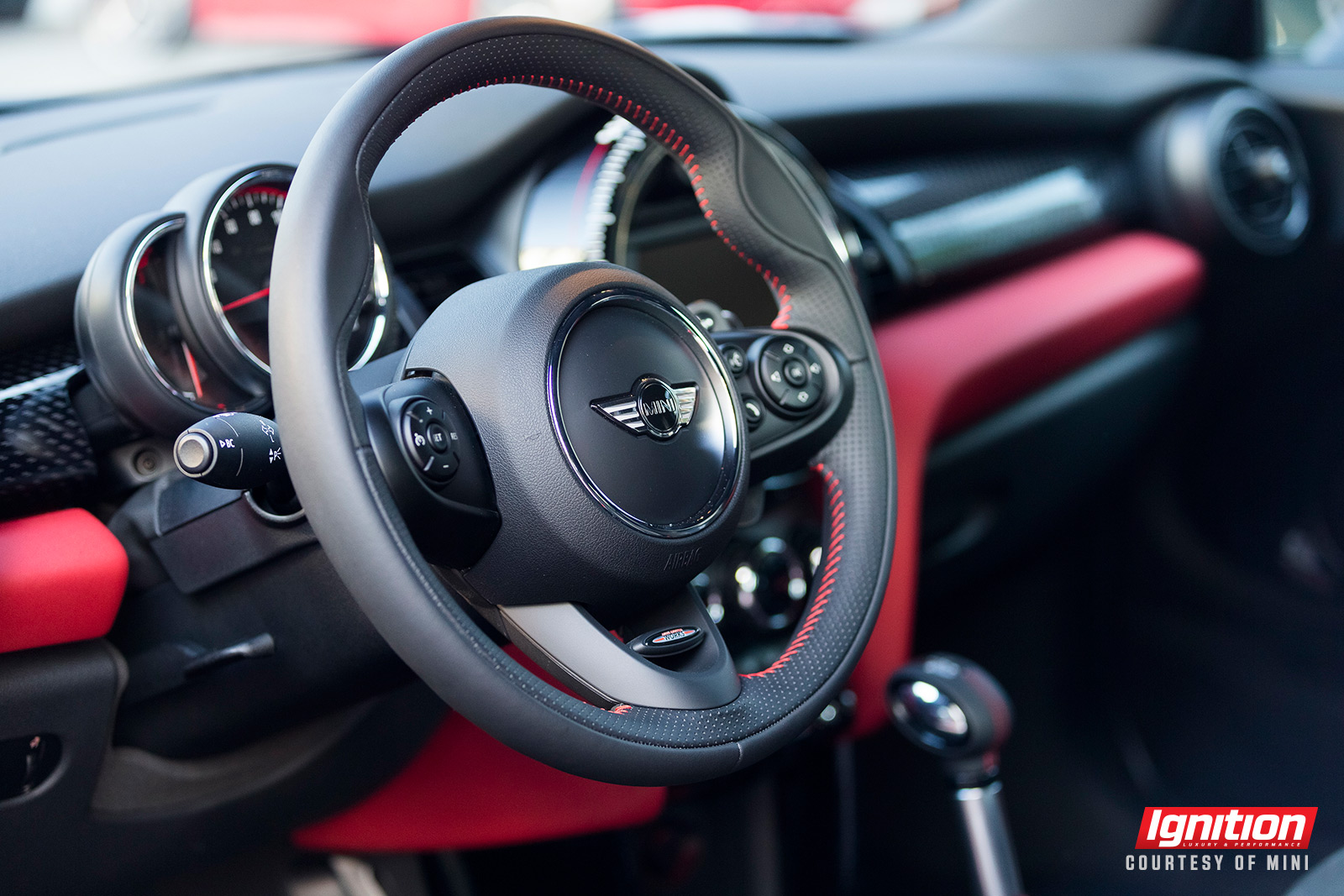
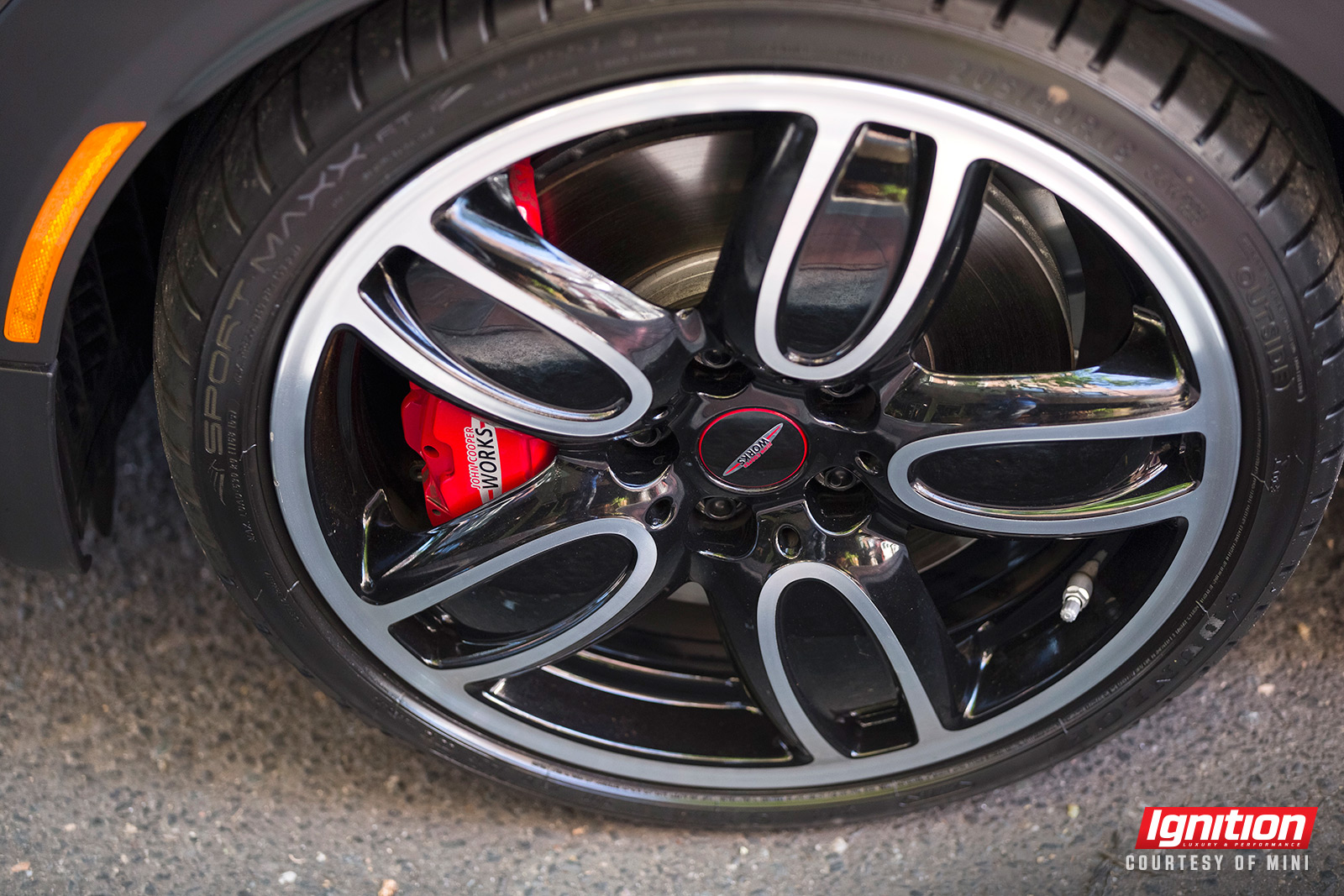
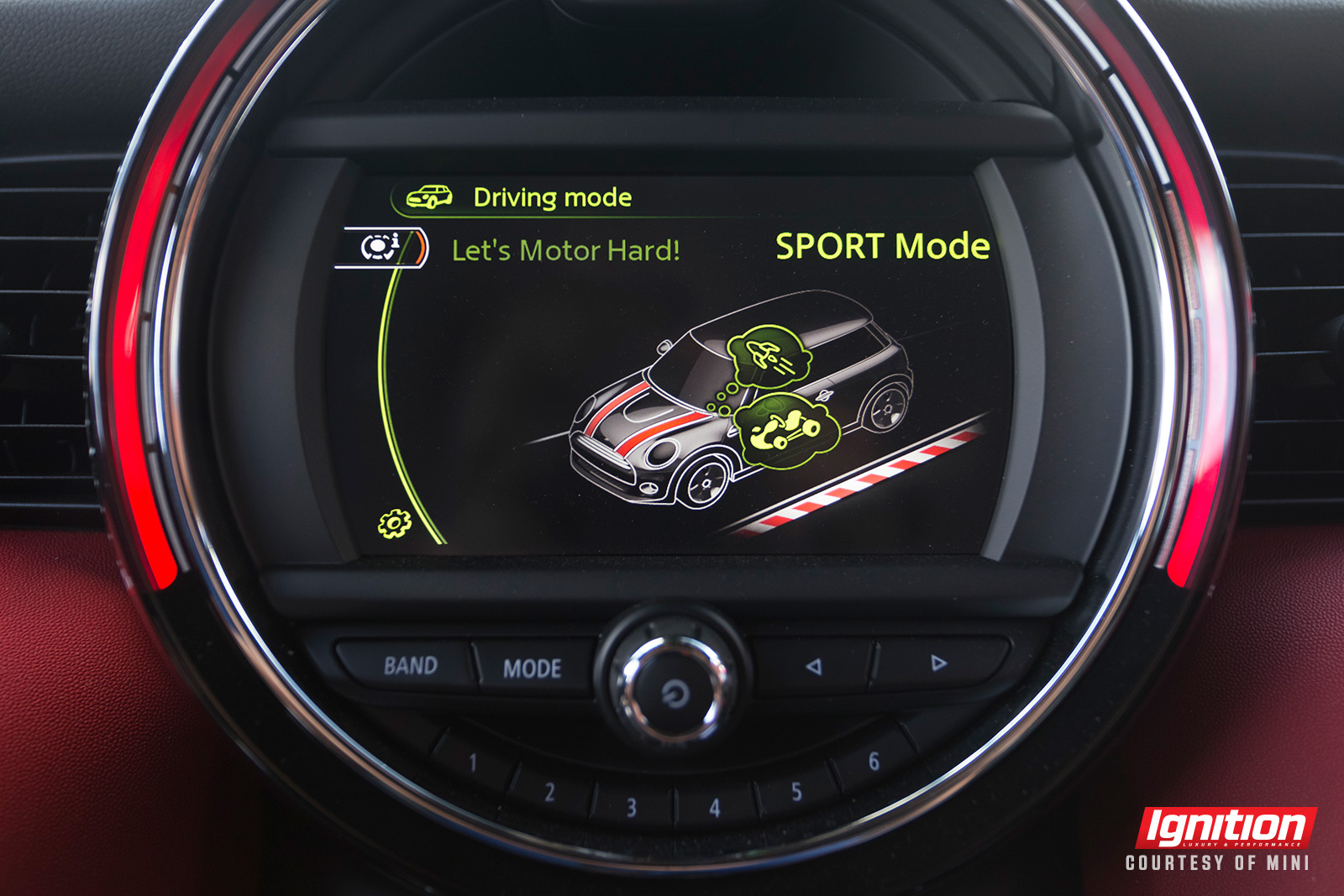

Naturally, the suspension is lower and stiffer, and it’s stiff enough that on rough surfaces, the ride gets tiresome. Still, if you’re coming to this JCW from a larger car – and most other cars are indeed bigger – you’ll say it handles like a go kart. A big, 1,300 kilogram go kart, but a go kart nonetheless. It corners with the flatness of the prairies of Saskatchewan, and turns in with lighting-like immediacy. The electric power steering has three different levels of assist and in my testing I found that I didn’t prefer one over the others.
Since it’s such a small and relatively lightweight package, chassis feel is superb, to the point where you’re absolutely confident in your ability to place this Mini anywhere on the road you desire. The dampers have two modes, but you’ll be hard pressed to notice a difference between either setting.
Brakes are by Brembo, perhaps the most famous name in brake technology, and are sublime. Pedal feel is high bit rate and that gives the driver remarkable control and confidence. Of course, Mini fits the JCW unique wheels, with your choice of either 17- or 18-inchers. They look great, but neither size does ride quality any favours. Go with the size or design of wheel you prefer.
Mini didn’t forget the JCW’s aero package either and, undoubtedly, you’ve already noticed the massive, raccoons-wallowing lower front air intakes. There is also a larger rear spoiler atop the hatch that Mini says reduces rear axle lift by 30 percent. While that’s probably a good thing for a road car, I’ll let you in on a little secret – any front-drive racer worth his or her salt spends a lot of time and money reducing the grip of their racer’s rear tires. Perhaps it’s best said that the rear spoiler just looks cool.
The most notable change inside the cabin are the excellent, JCW-specific sports seats. They’re properly supportive for aggressive, g-loaded driving, but also spectacularly supportive for those long haul highway runs, as I discovered. The vast majority of drivers will be perfectly satisfied with the seating position and first level ergonomics are top notch.
As with all Minis, second-level ergonomics are unconventional and quirky, most of it unusual to give the cabin some real character, but it doesn’t go so far as to be ineffective. It’s just refreshingly different that mainstream automobiles, and the world needs more fun cars with abundant character like this one.
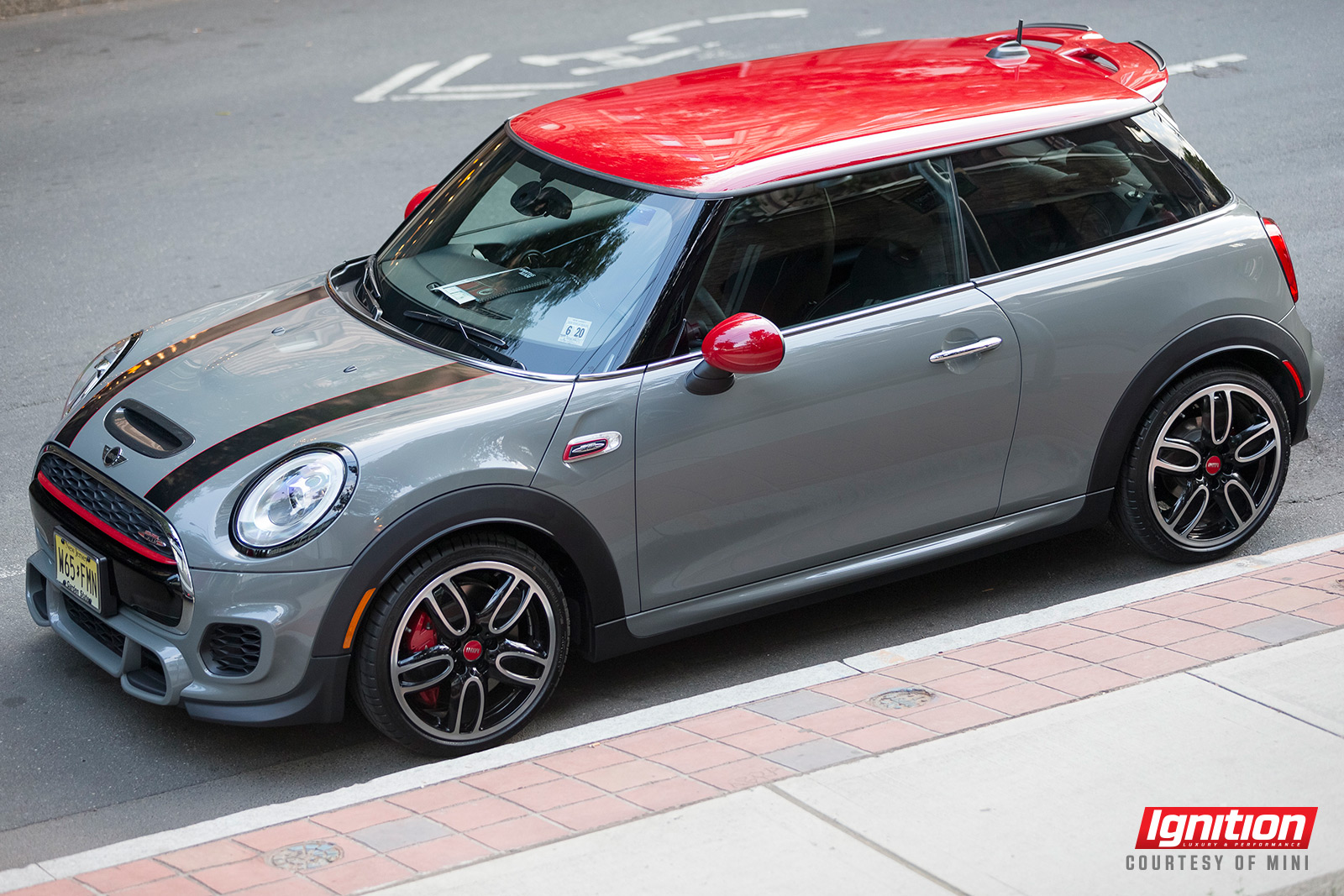
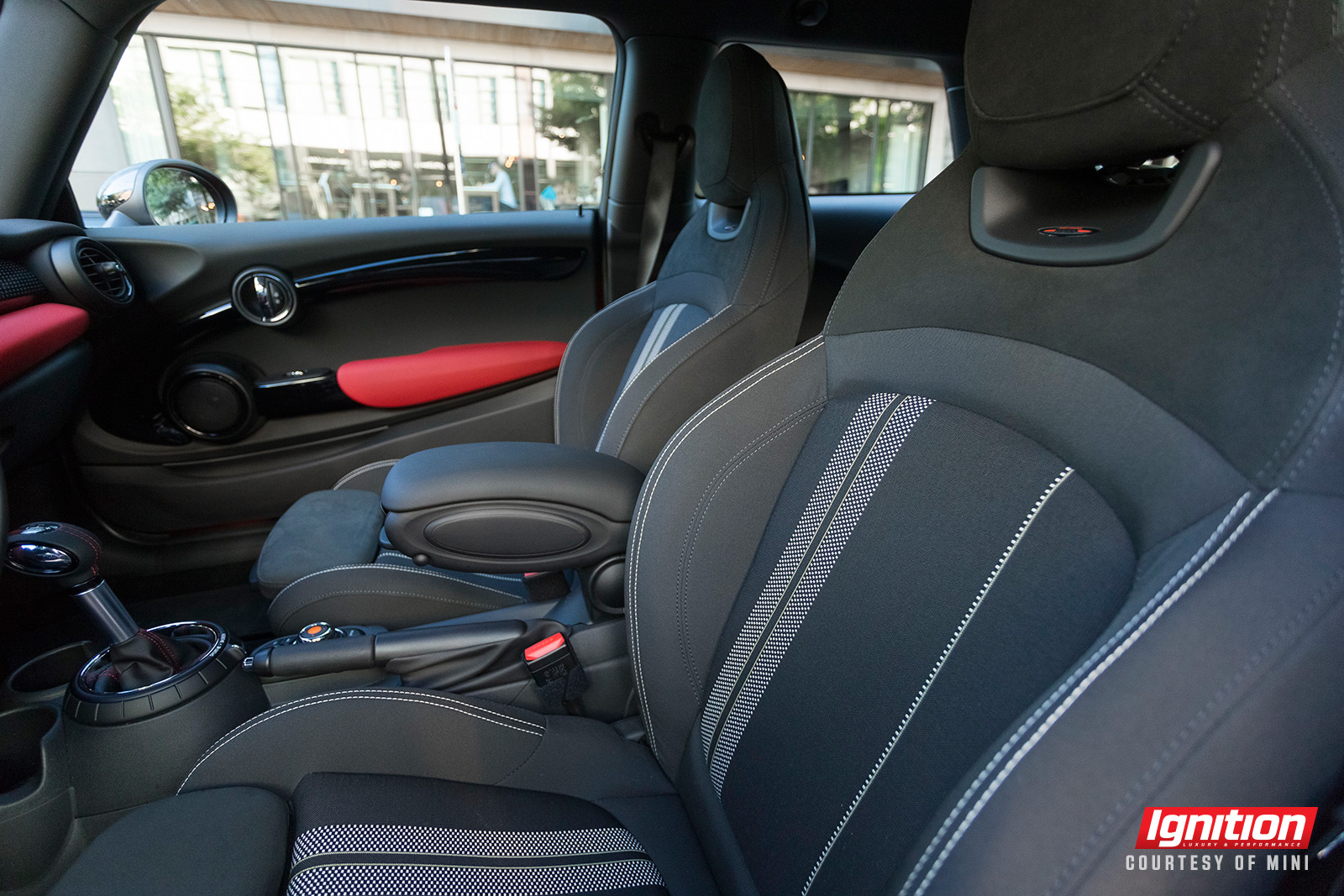

BY THE NUMBERS
$145.8/HP (CALCULATED W/ BASE MSRP)
114 HP/L
158.13 HP/TON
5.74 KG/HP
SPECIFICATIONS
2016 Mini John Cooper Works Hardtop
BASE PRICE: $33,240
AS TESTED: $44,740
ENGINE: 2.0L turbocharged 4-cylinder
HORSEPOWER: 228 hp @ 5,200-6,000 rpm
TORQUE: 236 lb-ft @ 1,250-4,800 rpm
DRY WEIGHT: 1,308 kg
CONFIGURATION: Front engine / front-wheel-drive
TRANSMISSION: 6-speed automatic
TIRES: Michelin Pilot Super Sport (205/40 R18 front and rear)
FUEL ECONOMY RATINGS (CITY / HWY.): 9.2 / 5.3 L/100 km
WARRANTY (MOS / KM): 48 / 80,000 km
ALTERNATIVES: Ford Focus ST, Hyundai Veloster Rallye
NOTABLE OPTIONS:
Wired navigation package ($1,450); Essentials package ($1,000); Loaded package ($1,150); Visibility package ($1,250); Red roof and mirror caps ($0); Performance tires ($50); Bonnet stripes ($150); 18” JCW Cup wheels ($800); Harman Kardon sound system ($750); JCW exclusive paint ($1,000); Automatic transmission ($1,650); Dinamica leather ($2,250).

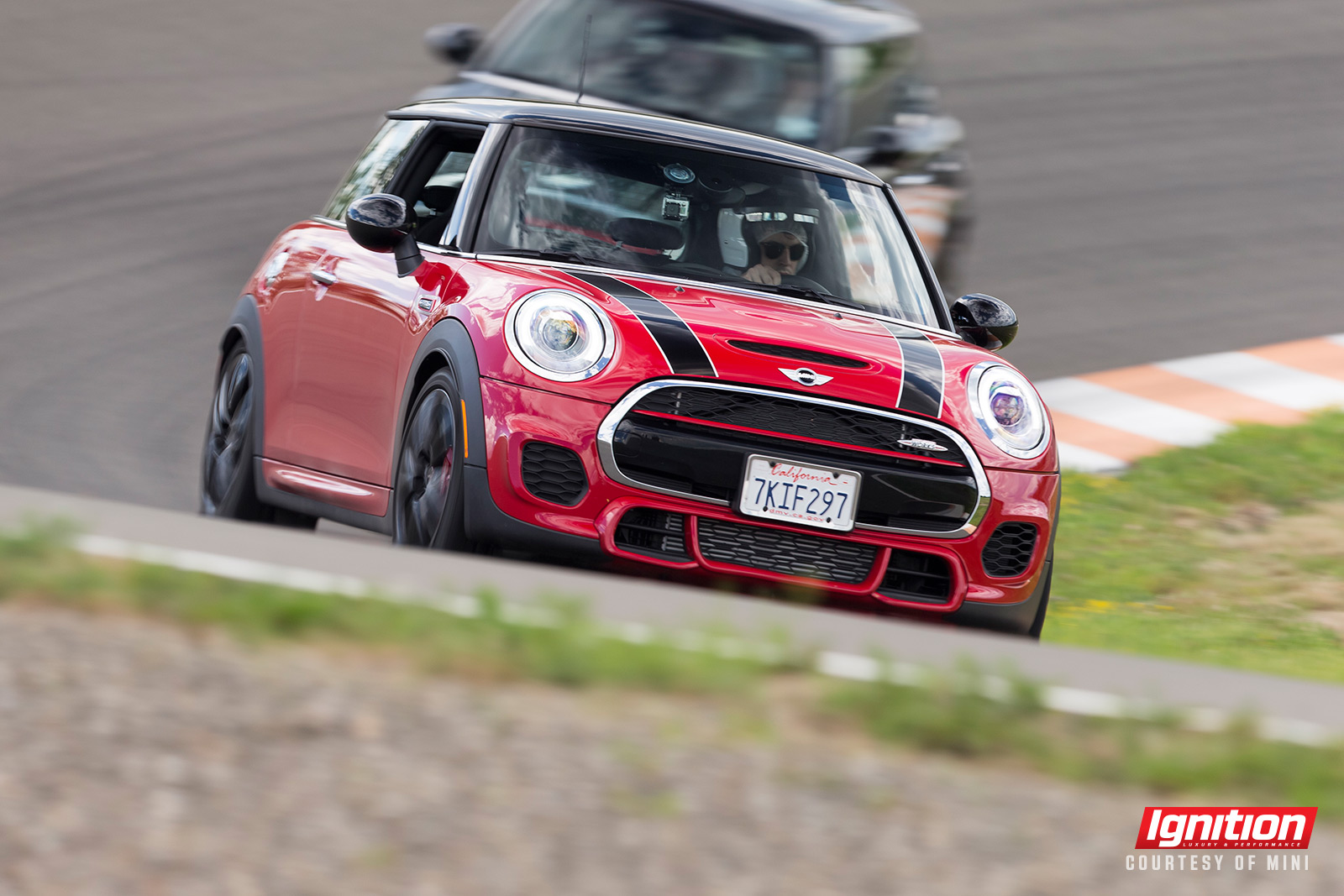
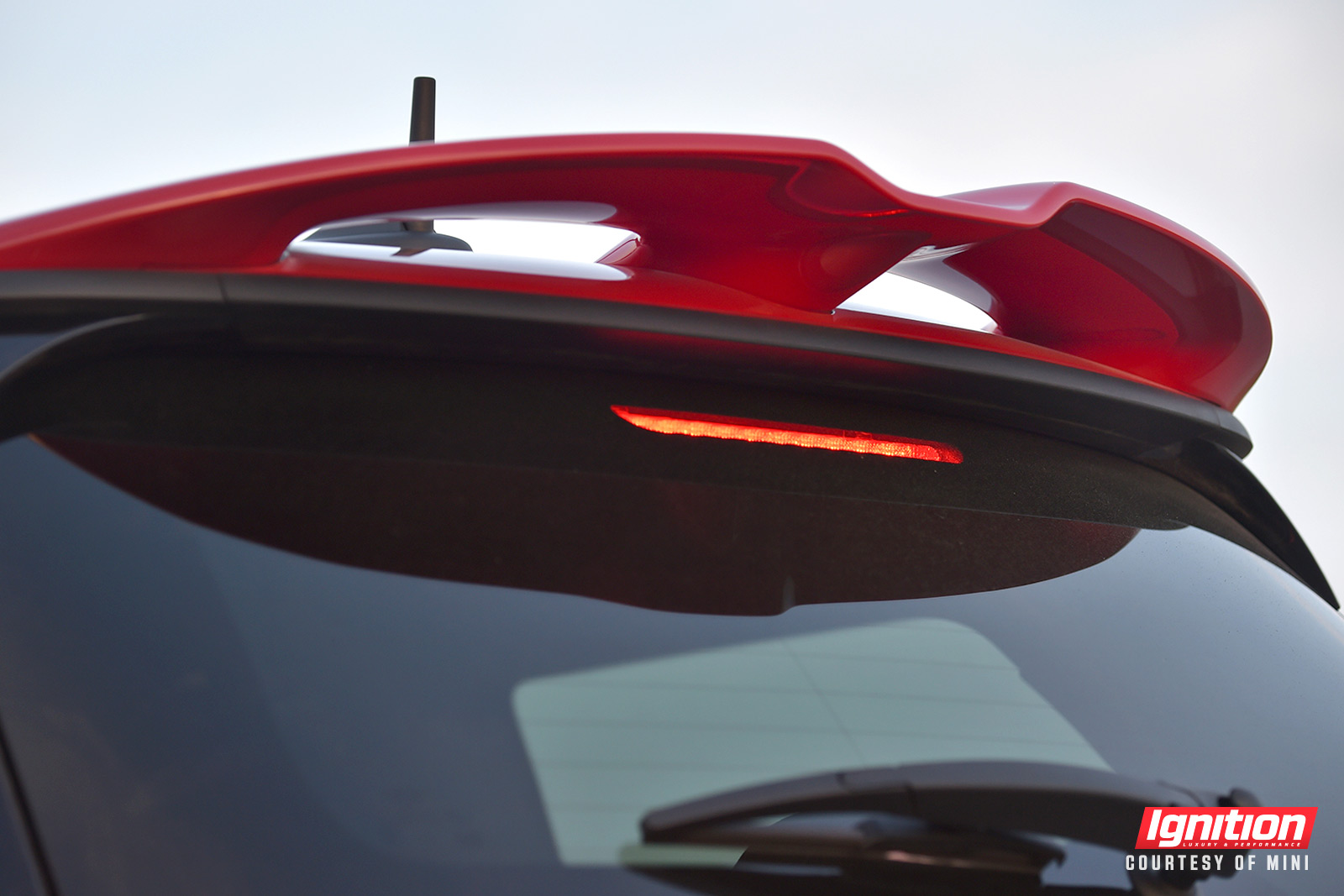
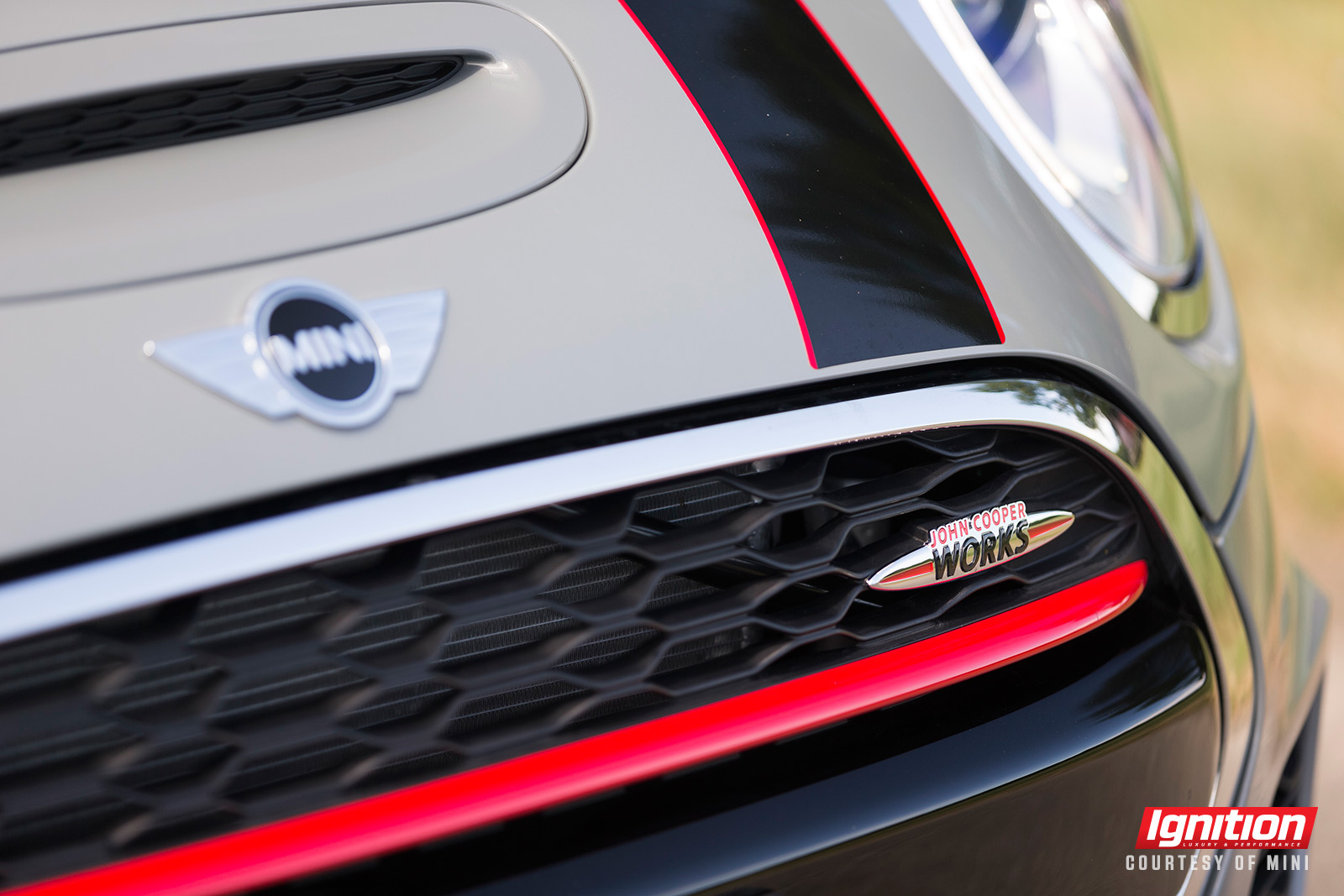
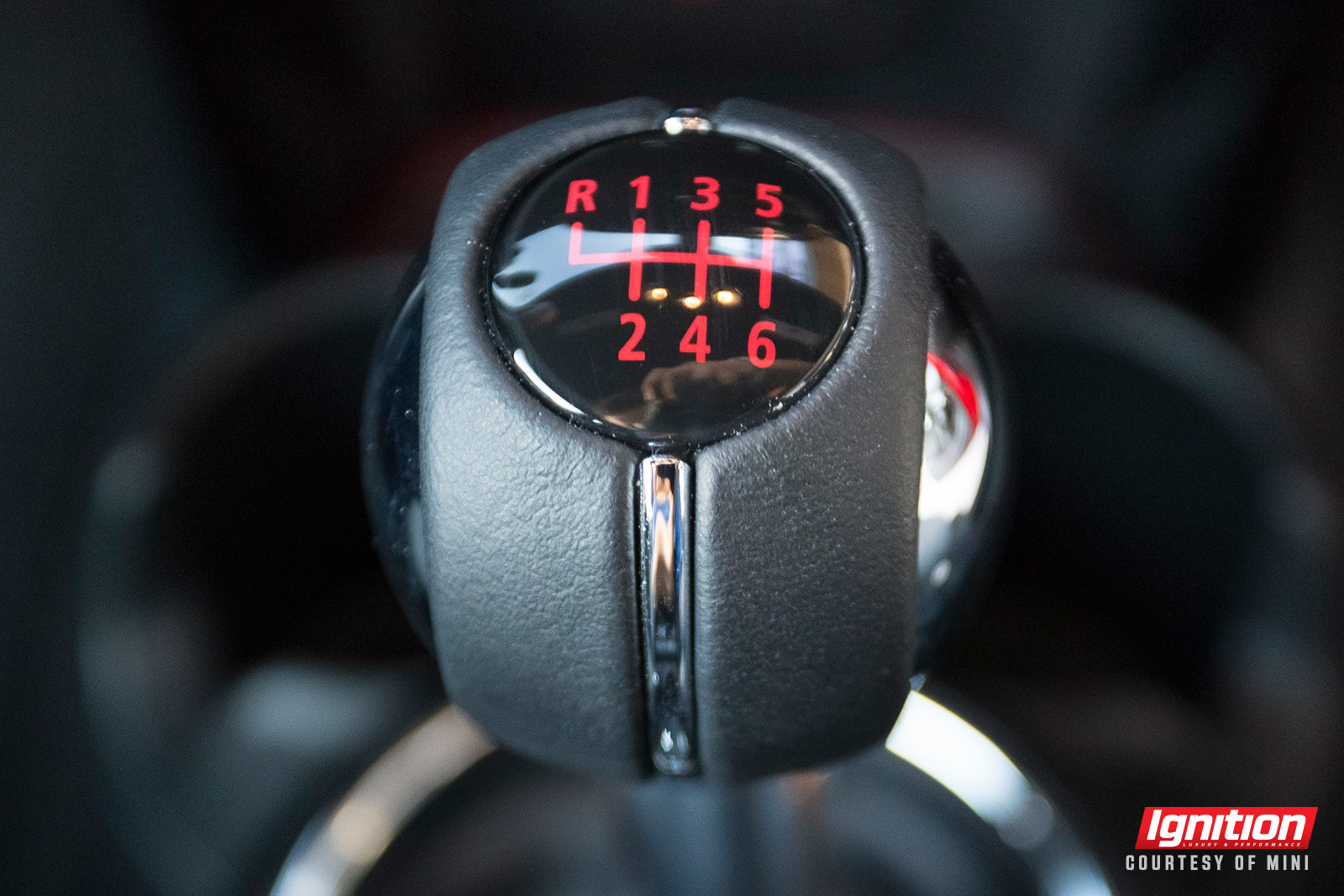
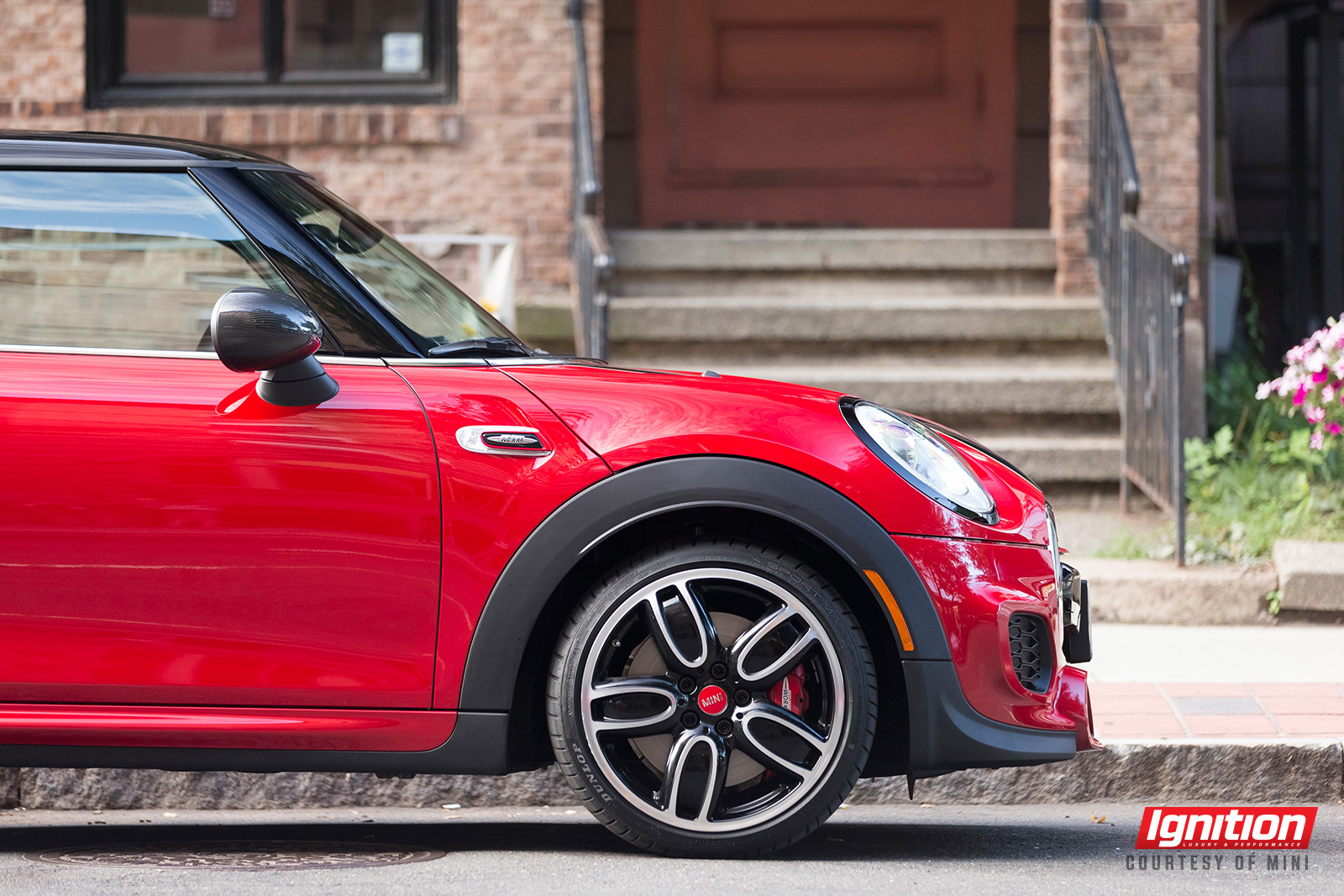
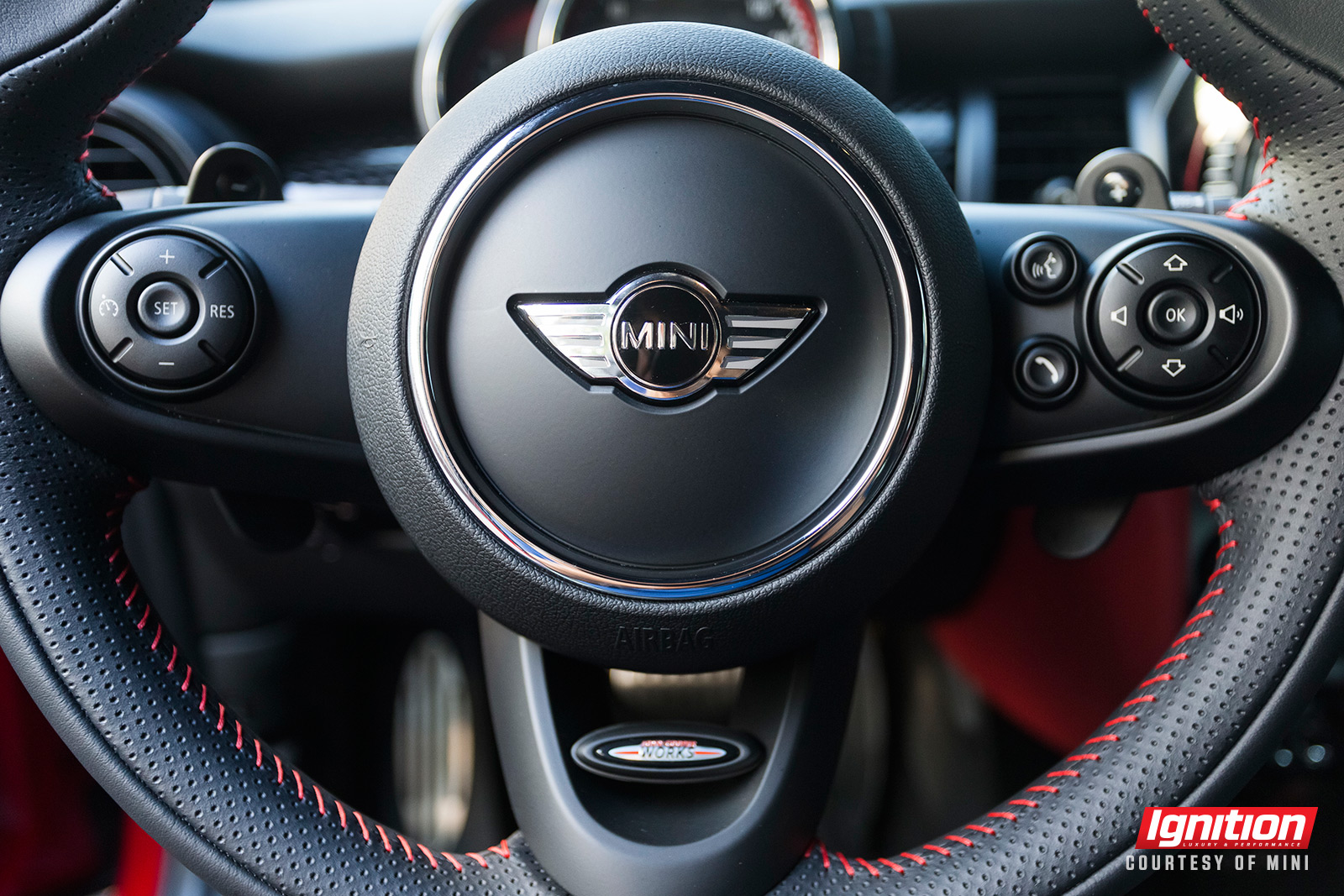
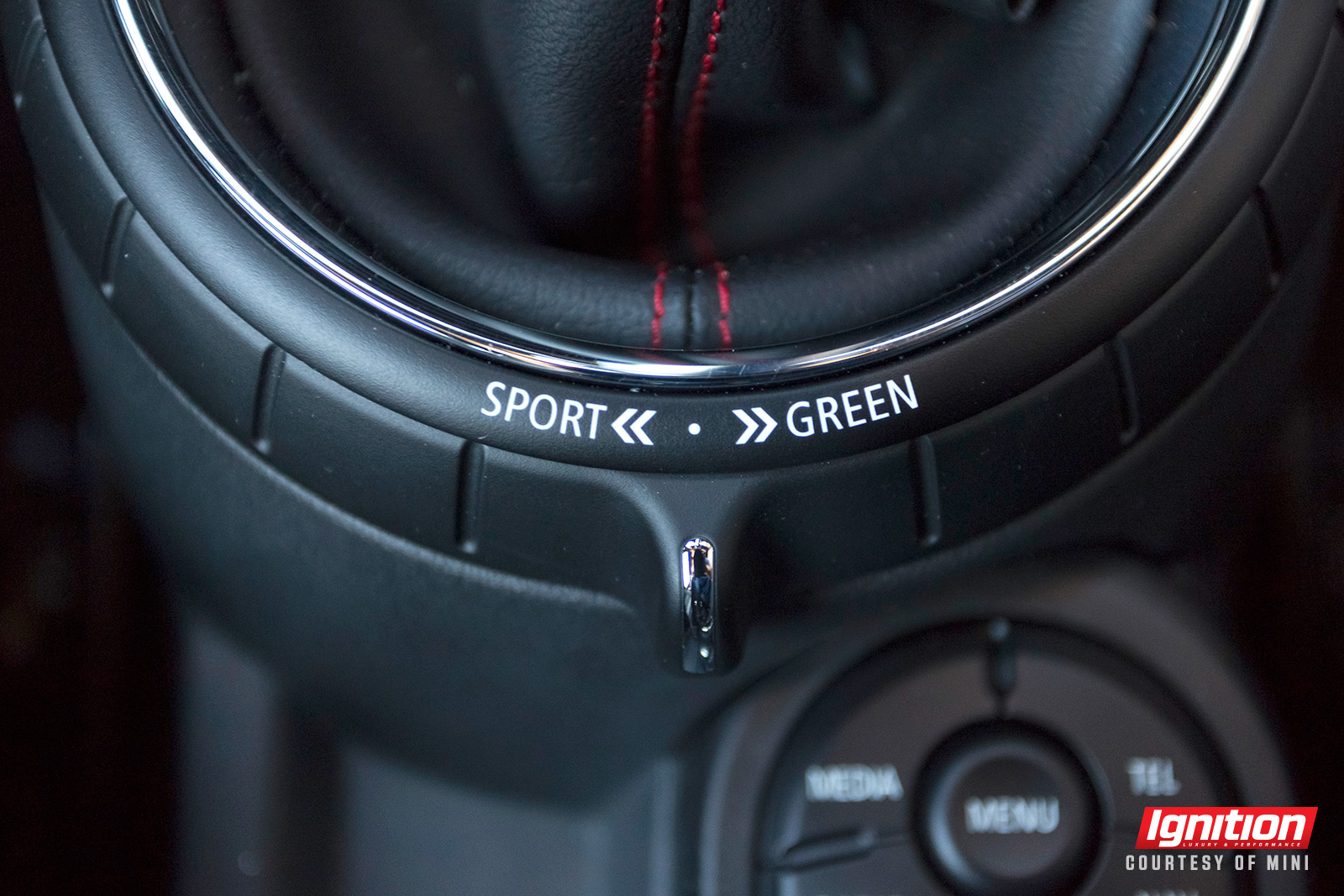
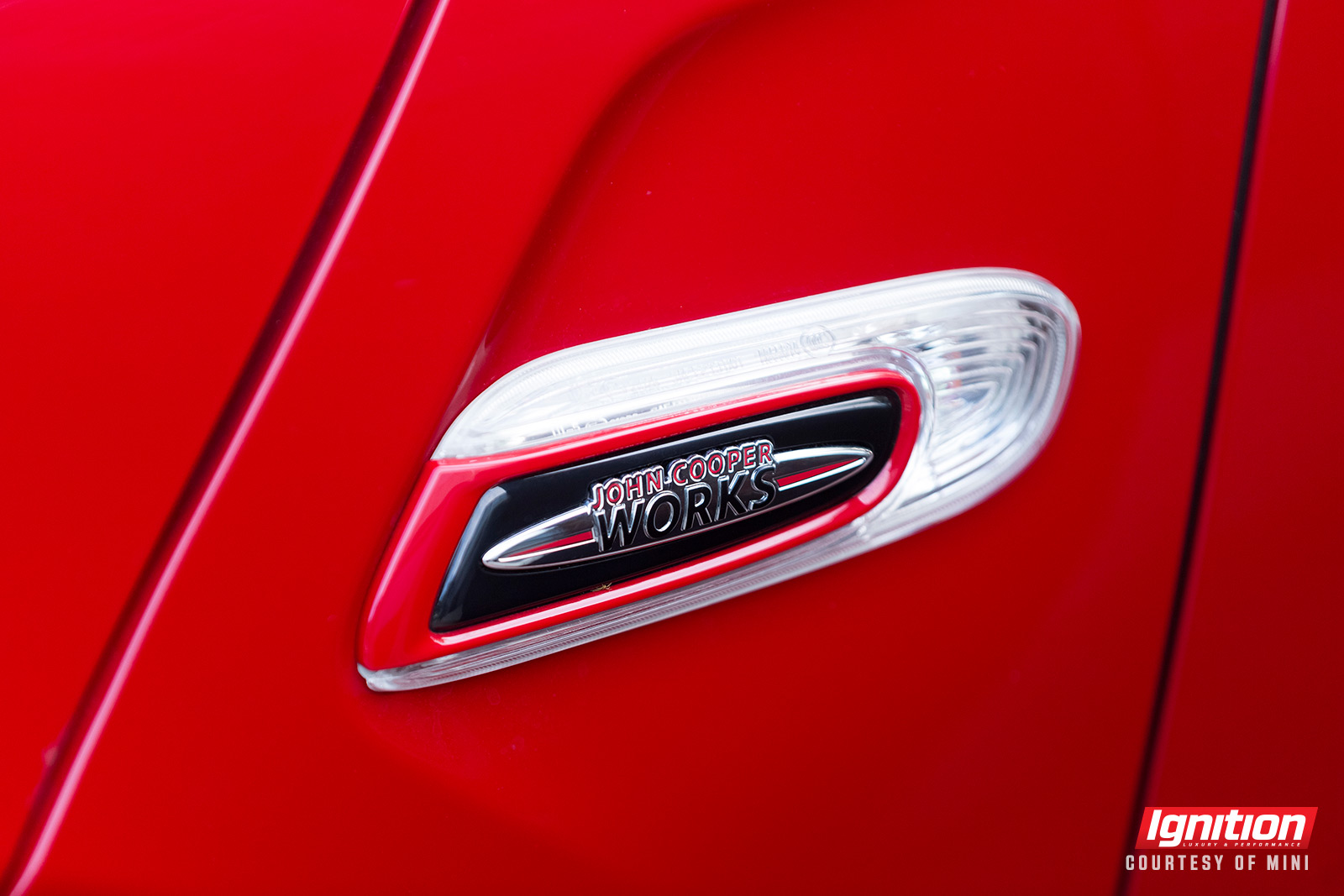

Contributor: Brian Makse






















